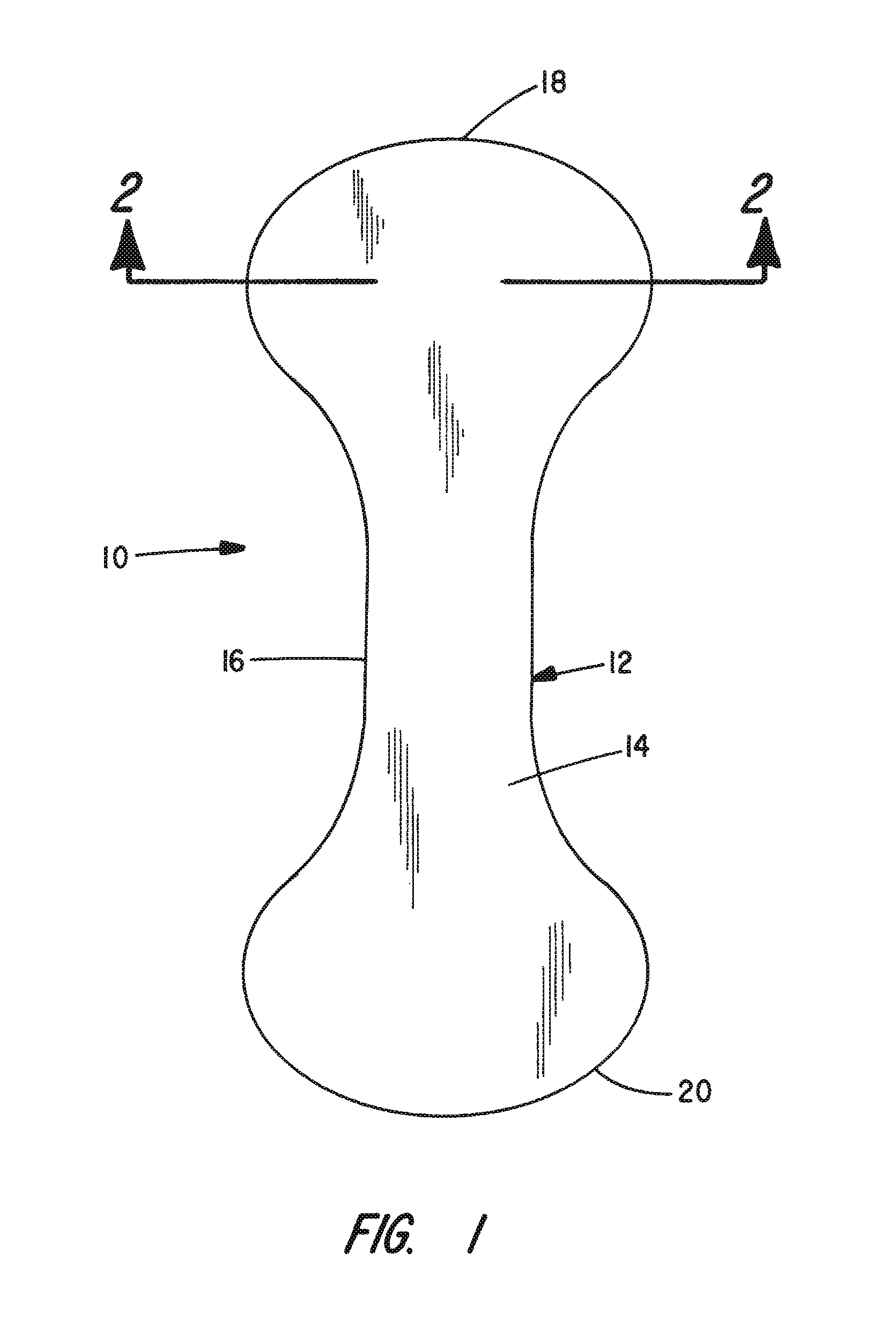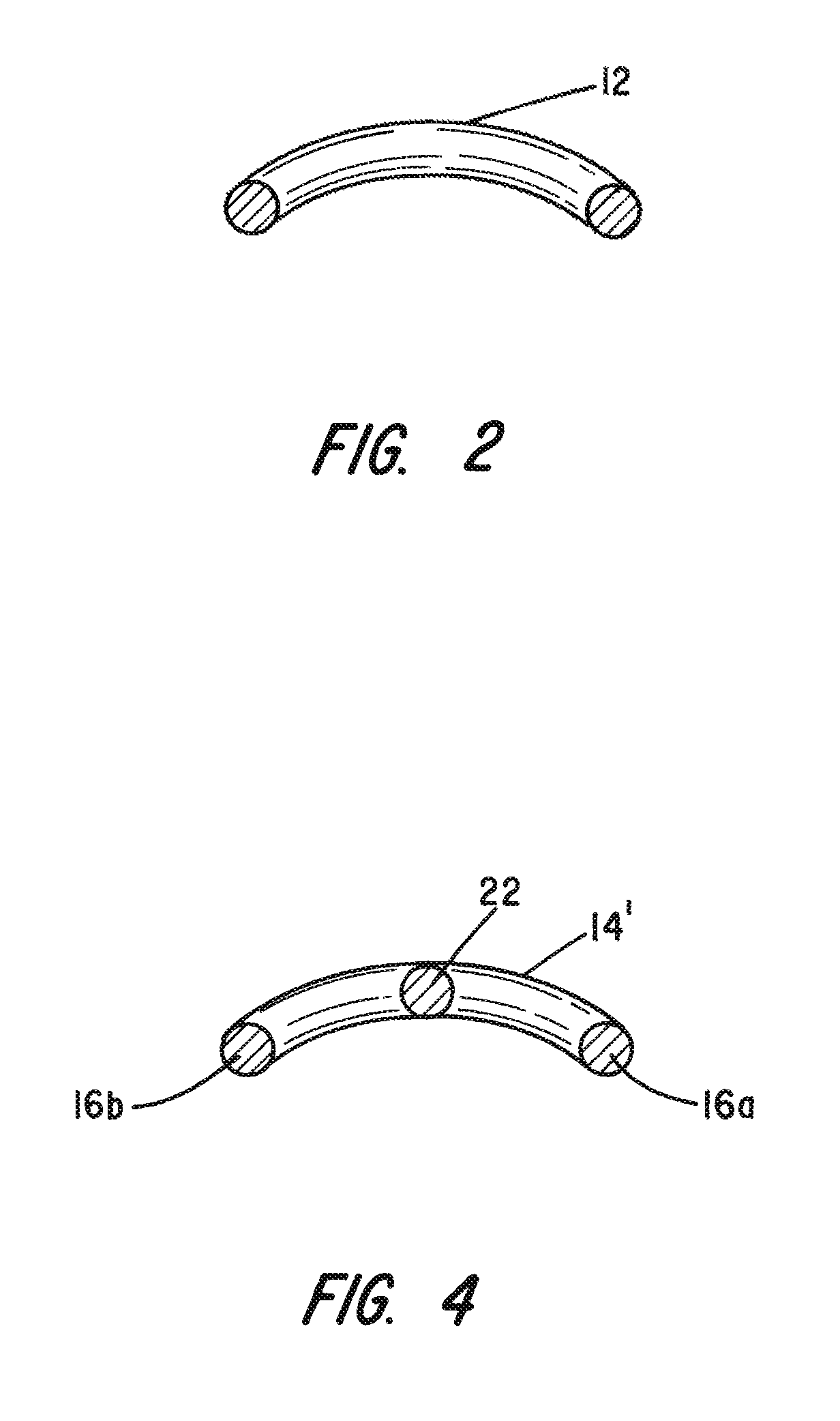Intraspinal device deployed through percutaneous approach into subarachnoid or intradural space of vertebral canal to protect spinal cord from external compression
a technology of intraspinal device and vertebral canal, which is applied in the field of medical devices, can solve the problems of neurological deficit, large process, and segmental sensory loss, and achieve the effect of preventing the development of neurologic deficits
- Summary
- Abstract
- Description
- Claims
- Application Information
AI Technical Summary
Benefits of technology
Problems solved by technology
Method used
Image
Examples
Embodiment Construction
[0021]Referring to FIG. 1, the present invention comprises a self-expanding, generally flat, dumbbell-shaped, implantable barrier device 10 which can be introduced in a compressed form through a flexible delivery tube into the subarachnoid or intradural spaces within the vertebral canal under fluoroscopic guidance. The implantable barrier device includes a frame 12 formed from a material exhibiting shape memory properties and consisting of a closed loop of wire where the frame is enclosed within a covering 14 of a selected non-porous membrane material. Without limitation, the frame 12 may be formed from one or more strands of Nitinol wire with plural strands being wound as a cable. The non-porous membrane covering 14 for the frame may be polyurethane, latex or another synthetic material that is somewhat flexible so as to be capable of being readily rolled or folded and which is otherwise body-compatible.
[0022]FIG. 1 shows the implantable barrier device 10 in its fully expanded state...
PUM
 Login to View More
Login to View More Abstract
Description
Claims
Application Information
 Login to View More
Login to View More - R&D
- Intellectual Property
- Life Sciences
- Materials
- Tech Scout
- Unparalleled Data Quality
- Higher Quality Content
- 60% Fewer Hallucinations
Browse by: Latest US Patents, China's latest patents, Technical Efficacy Thesaurus, Application Domain, Technology Topic, Popular Technical Reports.
© 2025 PatSnap. All rights reserved.Legal|Privacy policy|Modern Slavery Act Transparency Statement|Sitemap|About US| Contact US: help@patsnap.com



